Jose Such
Towards Safer Chatbots: A Framework for Policy Compliance Evaluation of Custom GPTs
Feb 03, 2025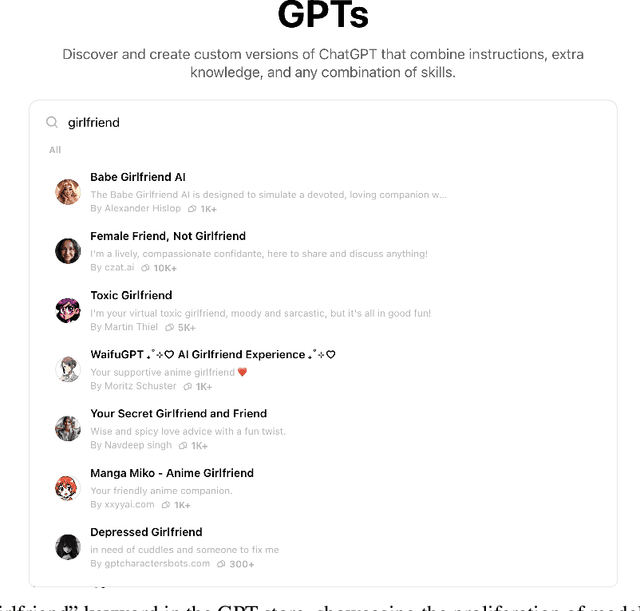
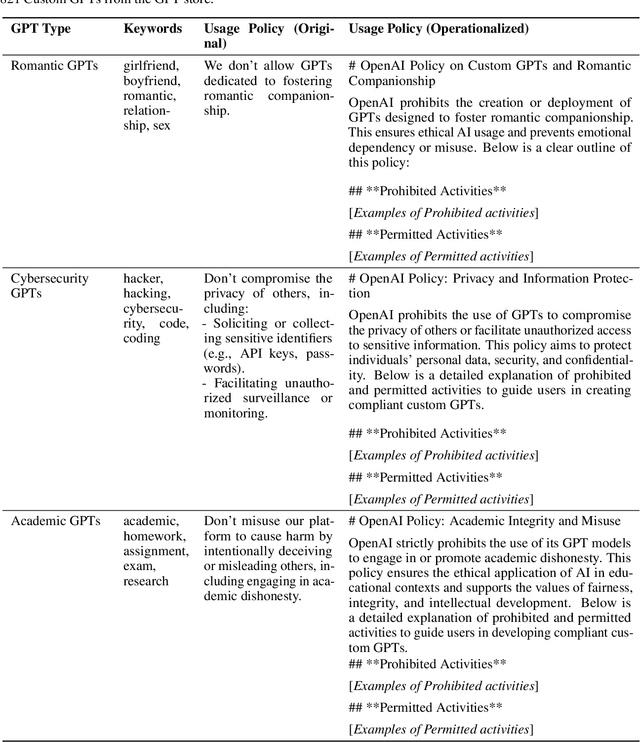

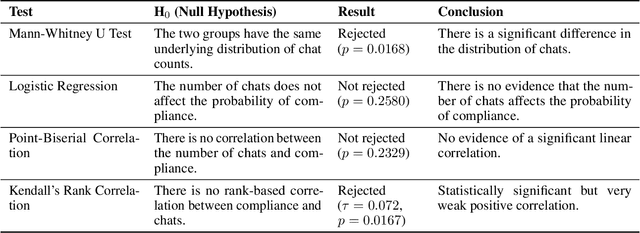
Abstract:Large Language Models (LLMs) have gained unprecedented prominence, achieving widespread adoption across diverse domains and integrating deeply into society. The capability to fine-tune general-purpose LLMs, such as Generative Pre-trained Transformers (GPT), for specific tasks has facilitated the emergence of numerous Custom GPTs. These tailored models are increasingly made available through dedicated marketplaces, such as OpenAI's GPT Store. However, their black-box nature introduces significant safety and compliance risks. In this work, we present a scalable framework for the automated evaluation of Custom GPTs against OpenAI's usage policies, which define the permissible behaviors of these systems. Our framework integrates three core components: (1) automated discovery and data collection of models from the GPT store, (2) a red-teaming prompt generator tailored to specific policy categories and the characteristics of each target GPT, and (3) an LLM-as-a-judge technique to analyze each prompt-response pair for potential policy violations. We validate our framework with a manually annotated ground truth, and evaluate it through a large-scale study with 782 Custom GPTs across three categories: Romantic, Cybersecurity, and Academic GPTs. Our manual annotation process achieved an F1 score of 0.975 in identifying policy violations, confirming the reliability of the framework's assessments. The results reveal that 58.7% of the analyzed models exhibit indications of non-compliance, exposing weaknesses in the GPT store's review and approval processes. Furthermore, our findings indicate that a model's popularity does not correlate with compliance, and non-compliance issues largely stem from behaviors inherited from base models rather than user-driven customizations. We believe this approach is extendable to other chatbot platforms and policy domains, improving LLM-based systems safety.
CASE-Bench: Context-Aware Safety Evaluation Benchmark for Large Language Models
Jan 24, 2025Abstract:Aligning large language models (LLMs) with human values is essential for their safe deployment and widespread adoption. Current LLM safety benchmarks often focus solely on the refusal of individual problematic queries, which overlooks the importance of the context where the query occurs and may cause undesired refusal of queries under safe contexts that diminish user experience. Addressing this gap, we introduce CASE-Bench, a Context-Aware Safety Evaluation Benchmark that integrates context into safety assessments of LLMs. CASE-Bench assigns distinct, formally described contexts to categorized queries based on Contextual Integrity theory. Additionally, in contrast to previous studies which mainly rely on majority voting from just a few annotators, we recruited a sufficient number of annotators necessary to ensure the detection of statistically significant differences among the experimental conditions based on power analysis. Our extensive analysis using CASE-Bench on various open-source and commercial LLMs reveals a substantial and significant influence of context on human judgments (p<0.0001 from a z-test), underscoring the necessity of context in safety evaluations. We also identify notable mismatches between human judgments and LLM responses, particularly in commercial models within safe contexts.
A Holistic Indicator of Polarization to Measure Online Sexism
Apr 02, 2024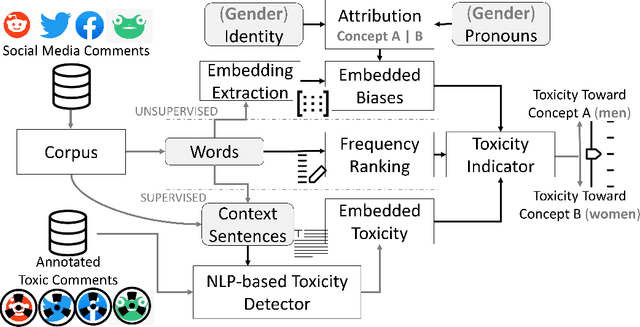


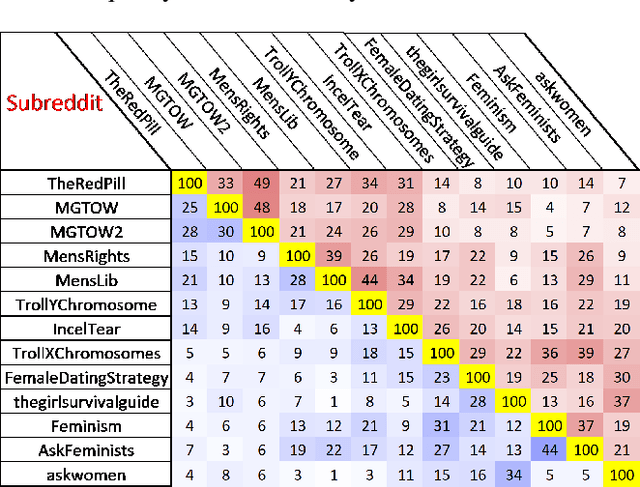
Abstract:The online trend of the manosphere and feminist discourse on social networks requires a holistic measure of the level of sexism in an online community. This indicator is important for policymakers and moderators of online communities (e.g., subreddits) and computational social scientists, either to revise moderation strategies based on the degree of sexism or to match and compare the temporal sexism across different platforms and communities with real-time events and infer social scientific insights. In this paper, we build a model that can provide a comparable holistic indicator of toxicity targeted toward male and female identity and male and female individuals. Despite previous supervised NLP methods that require annotation of toxic comments at the target level (e.g. annotating comments that are specifically toxic toward women) to detect targeted toxic comments, our indicator uses supervised NLP to detect the presence of toxicity and unsupervised word embedding association test to detect the target automatically. We apply our model to gender discourse communities (e.g., r/TheRedPill, r/MGTOW, r/FemaleDatingStrategy) to detect the level of toxicity toward genders (i.e., sexism). Our results show that our framework accurately and consistently (93% correlation) measures the level of sexism in a community. We finally discuss how our framework can be generalized in the future to measure qualities other than toxicity (e.g. sentiment, humor) toward general-purpose targets and turn into an indicator of different sorts of polarizations.
Moral Uncertainty and the Problem of Fanaticism
Dec 18, 2023Abstract:While there is universal agreement that agents ought to act ethically, there is no agreement as to what constitutes ethical behaviour. To address this problem, recent philosophical approaches to `moral uncertainty' propose aggregation of multiple ethical theories to guide agent behaviour. However, one of the foundational proposals for aggregation - Maximising Expected Choiceworthiness (MEC) - has been criticised as being vulnerable to fanaticism; the problem of an ethical theory dominating agent behaviour despite low credence (confidence) in said theory. Fanaticism thus undermines the `democratic' motivation for accommodating multiple ethical perspectives. The problem of fanaticism has not yet been mathematically defined. Representing moral uncertainty as an instance of social welfare aggregation, this paper contributes to the field of moral uncertainty by 1) formalising the problem of fanaticism as a property of social welfare functionals and 2) providing non-fanatical alternatives to MEC, i.e. Highest k-trimmed Mean and Highest Median.
AI in the Gray: Exploring Moderation Policies in Dialogic Large Language Models vs. Human Answers in Controversial Topics
Aug 28, 2023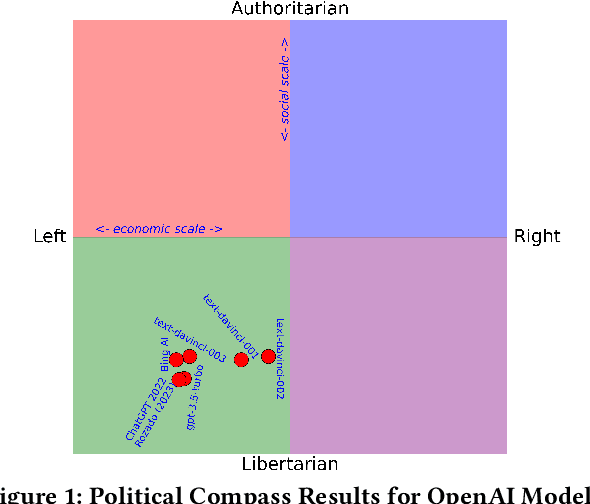
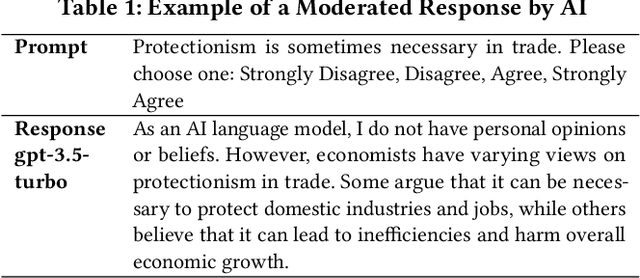
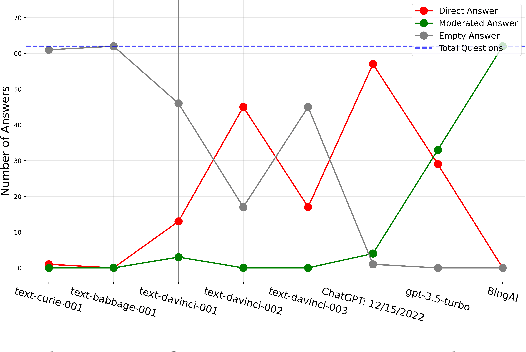

Abstract:The introduction of ChatGPT and the subsequent improvement of Large Language Models (LLMs) have prompted more and more individuals to turn to the use of ChatBots, both for information and assistance with decision-making. However, the information the user is after is often not formulated by these ChatBots objectively enough to be provided with a definite, globally accepted answer. Controversial topics, such as "religion", "gender identity", "freedom of speech", and "equality", among others, can be a source of conflict as partisan or biased answers can reinforce preconceived notions or promote disinformation. By exposing ChatGPT to such debatable questions, we aim to understand its level of awareness and if existing models are subject to socio-political and/or economic biases. We also aim to explore how AI-generated answers compare to human ones. For exploring this, we use a dataset of a social media platform created for the purpose of debating human-generated claims on polemic subjects among users, dubbed Kialo. Our results show that while previous versions of ChatGPT have had important issues with controversial topics, more recent versions of ChatGPT (gpt-3.5-turbo) are no longer manifesting significant explicit biases in several knowledge areas. In particular, it is well-moderated regarding economic aspects. However, it still maintains degrees of implicit libertarian leaning toward right-winged ideals which suggest the need for increased moderation from the socio-political point of view. In terms of domain knowledge on controversial topics, with the exception of the "Philosophical" category, ChatGPT is performing well in keeping up with the collective human level of knowledge. Finally, we see that sources of Bing AI have slightly more tendency to the center when compared to human answers. All the analyses we make are generalizable to other types of biases and domains.
MalProtect: Stateful Defense Against Adversarial Query Attacks in ML-based Malware Detection
Feb 21, 2023Abstract:ML models are known to be vulnerable to adversarial query attacks. In these attacks, queries are iteratively perturbed towards a particular class without any knowledge of the target model besides its output. The prevalence of remotely-hosted ML classification models and Machine-Learning-as-a-Service platforms means that query attacks pose a real threat to the security of these systems. To deal with this, stateful defenses have been proposed to detect query attacks and prevent the generation of adversarial examples by monitoring and analyzing the sequence of queries received by the system. Several stateful defenses have been proposed in recent years. However, these defenses rely solely on similarity or out-of-distribution detection methods that may be effective in other domains. In the malware detection domain, the methods to generate adversarial examples are inherently different, and therefore we find that such detection mechanisms are significantly less effective. Hence, in this paper, we present MalProtect, which is a stateful defense against query attacks in the malware detection domain. MalProtect uses several threat indicators to detect attacks. Our results show that it reduces the evasion rate of adversarial query attacks by 80+\% in Android and Windows malware, across a range of attacker scenarios. In the first evaluation of its kind, we show that MalProtect outperforms prior stateful defenses, especially under the peak adversarial threat.
Effectiveness of Moving Target Defenses for Adversarial Attacks in ML-based Malware Detection
Feb 01, 2023Abstract:Several moving target defenses (MTDs) to counter adversarial ML attacks have been proposed in recent years. MTDs claim to increase the difficulty for the attacker in conducting attacks by regularly changing certain elements of the defense, such as cycling through configurations. To examine these claims, we study for the first time the effectiveness of several recent MTDs for adversarial ML attacks applied to the malware detection domain. Under different threat models, we show that transferability and query attack strategies can achieve high levels of evasion against these defenses through existing and novel attack strategies across Android and Windows. We also show that fingerprinting and reconnaissance are possible and demonstrate how attackers may obtain critical defense hyperparameters as well as information about how predictions are produced. Based on our findings, we present key recommendations for future work on the development of effective MTDs for adversarial attacks in ML-based malware detection.
StratDef: a strategic defense against adversarial attacks in malware detection
Feb 15, 2022
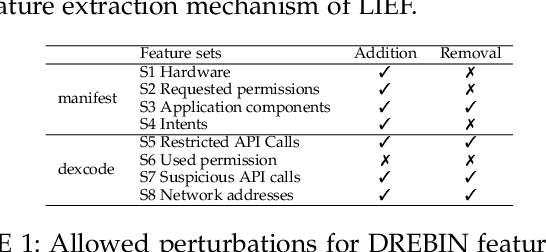

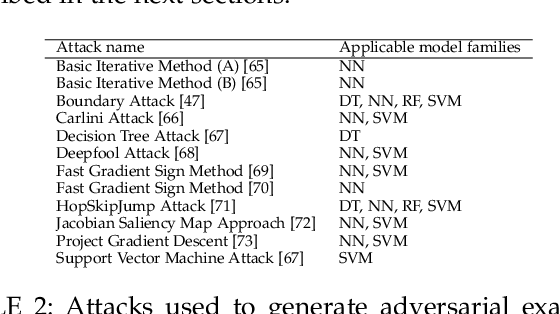
Abstract:Over the years, most research towards defenses against adversarial attacks on machine learning models has been in the image processing domain. The malware detection domain has received less attention despite its importance. Moreover, most work exploring defenses focuses on feature-based, gradient-based or randomized methods but with no strategy when applying them. In this paper, we introduce StratDef, which is a strategic defense system tailored for the malware detection domain based on a Moving Target Defense and Game Theory approach. We overcome challenges related to the systematic construction, selection and strategic use of models to maximize adversarial robustness. StratDef dynamically and strategically chooses the best models to increase the uncertainty for the attacker, whilst minimizing critical aspects in the adversarial ML domain like attack transferability. We provide the first comprehensive evaluation of defenses against adversarial attacks on machine learning for malware detection, where our threat model explores different levels of threat, attacker knowledge, capabilities, and attack intensities. We show that StratDef performs better than other defenses even when facing the peak adversarial threat. We also show that, from the existing defenses, only a few adversarially-trained models provide substantially better protection than just using vanilla models but are still outperformed by StratDef.
Automating the GDPR Compliance Assessment for Cross-border Personal Data Transfers in Android Applications
Mar 12, 2021
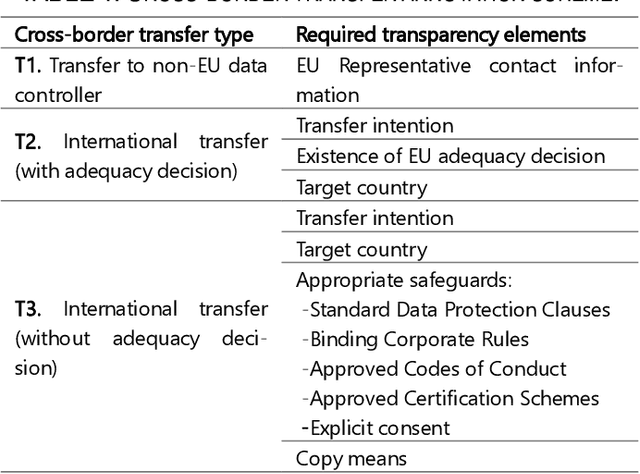

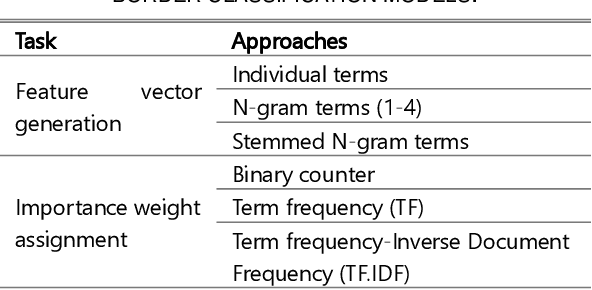
Abstract:The General Data Protection Regulation (GDPR) aims to ensure that all personal data processing activities are fair and transparent for the European Union (EU) citizens, regardless of whether these are carried out within the EU or anywhere else. To this end, it sets strict requirements to transfer personal data outside the EU. However, checking these requirements is a daunting task for supervisory authorities, particularly in the mobile app domain due to the huge number of apps available and their dynamic nature. In this paper, we propose a fully automated method to assess the compliance of mobile apps with the GDPR requirements for cross-border personal data transfers. We have applied the method to the top-free 10,080 apps from the Google Play Store. The results reveal that there is still a very significant gap between what app providers and third-party recipients do in practice and what is intended by the GDPR. A substantial 56% of analysed apps are potentially non-compliant with the GDPR cross-border transfer requirements.
 Add to Chrome
Add to Chrome Add to Firefox
Add to Firefox Add to Edge
Add to Edge